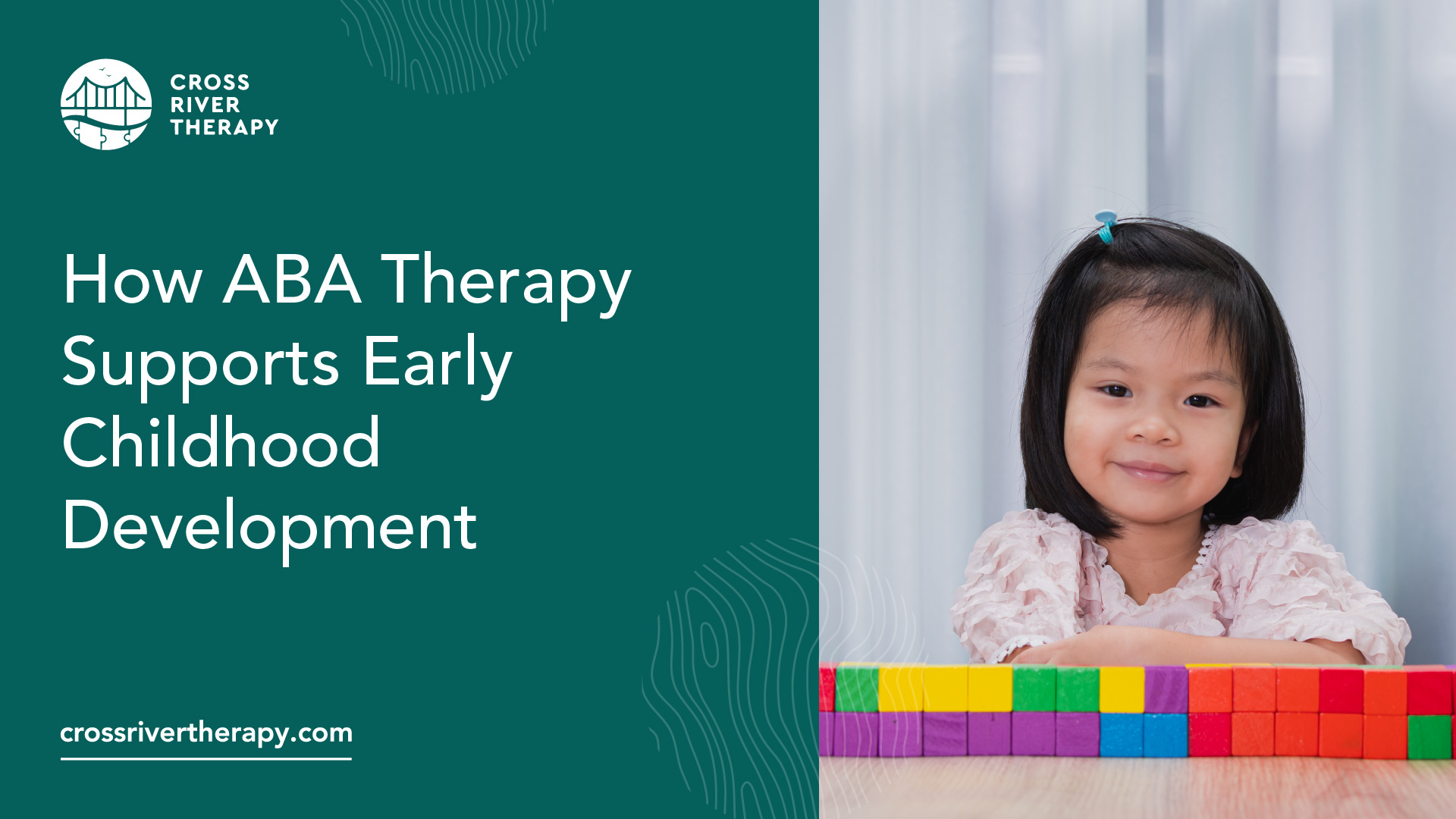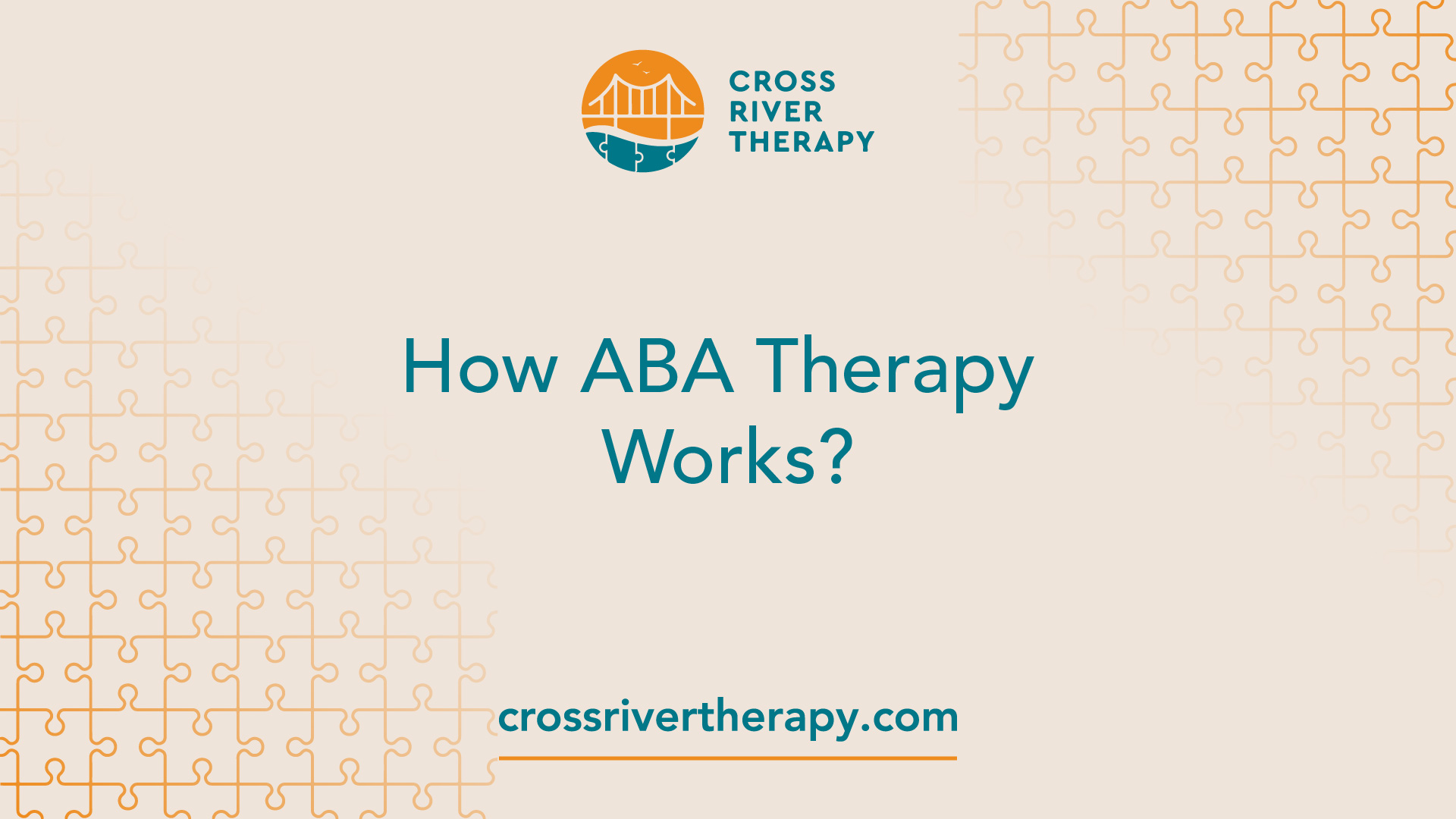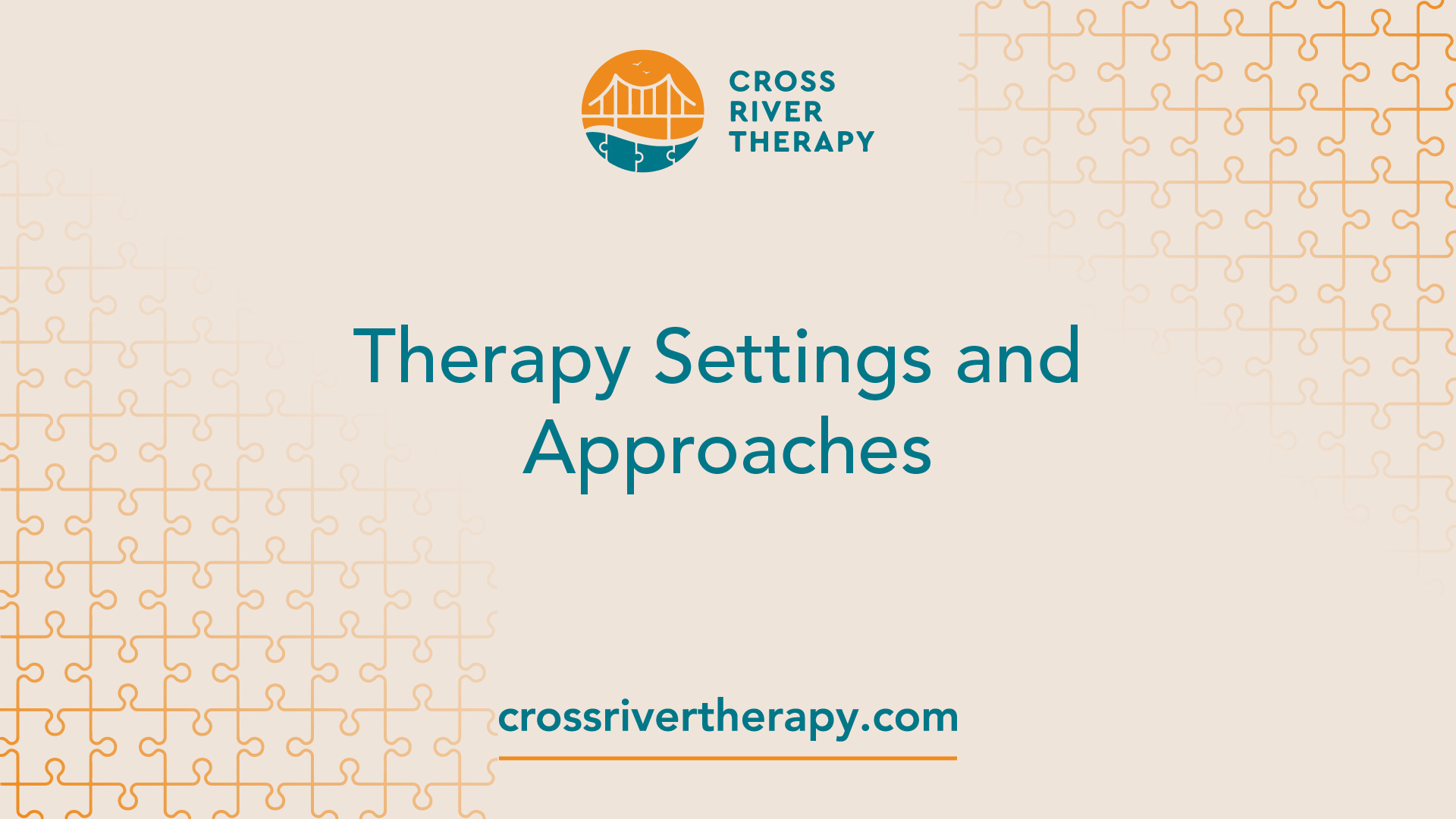How ABA Therapy Supports Early Childhood Development?
Learn how ABA therapy supports early childhood development to foster growth and foundational skills.

Understanding ABA Therapy
ABA therapy, or Applied Behavior Analysis, is a well-established approach that supports children diagnosed with autism and related developmental disorders. This section explores the history and development of ABA therapy, as well as the evidence-based practices that underpin its effectiveness.
History and Development
ABA therapy has been utilized since the 1960s to assist children with autism and related developmental challenges. The foundational principles of ABA were established in the early Lovaas model and further expanded through the UCLA Young Autism Project.
Over the past 60 years, ABA has evolved into various comprehensive treatment models and focused intervention practices, methods, and teaching strategies [1].
The evolution of ABA therapy reflects a growing understanding of how behavioral principles can be effectively applied to improve the lives of children with autism. As research progressed, practitioners developed more targeted approaches, tailoring interventions to meet the unique needs of each child.
This adaptability is one of the reasons why ABA has become a trusted method among parents and professionals alike.
Evidence-Based Practices
ABA therapy is grounded in empirical research and has been recognized as an evidence-based treatment by reputable organizations, including the US Surgeon General and the American Psychological Association. The evidence supporting ABA therapy highlights its effectiveness in promoting skill development, enhancing social interactions, and improving daily living skills for children with autism.
Research indicates that long-term, comprehensive ABA-based interventions yield significant benefits for the lifelong development of children with autism spectrum disorder (ASD). Studies have shown positive effects on intellectual functioning, language development, acquisition of daily living skills, and social functioning. This strong backing from scientific literature reinforces the importance of ABA therapy as a viable option for parents seeking support for their children.
In summary, understanding the history and evidence-based practices of ABA therapy can empower parents to make informed decisions about their child's therapy options.
How ABA Therapy Works?

ABA therapy is designed to be effective and supportive for children diagnosed with autism. Two key components that make this therapy successful are individualized treatment plans and the role of positive reinforcement.
Individualized Treatment Plans
Each child is unique, and ABA therapy recognizes this by offering tailored treatment plans that cater to individual needs. A board-certified behavior analyst (BCBA) designs and oversees these programs, customizing them based on the child's skills, interests, preferences, and family situation.
This approach ensures that the therapy remains relevant and goal-oriented, maximizing the potential for positive change.
The process begins with an assessment of the child's current abilities and challenges. From there, the BCBA formulates specific goals and objectives, which may include enhancing communication skills, social interactions, and daily living skills.
This individualized focus helps to create a supportive learning environment that promotes growth and development.
- Assessment: Evaluating the child's needs and skills.
- Customization: Tailoring the program to fit the child's interests.
- Goal-Oriented: Setting specific, measurable objectives.
Role of Positive Reinforcement
Positive reinforcement is a cornerstone of ABA therapy's methodology. This technique involves encouraging desirable behaviors by providing rewards or incentives, making it more likely that the child will repeat those behaviors in the future [2].
For example, when a child uses a new word correctly, they might receive praise or a small reward, reinforcing the behavior.
This strategy is not only effective in teaching new skills but also in modifying challenging behaviors. By emphasizing what children do right, instead of focusing solely on what they do wrong, ABA therapy fosters a positive learning environment.
Children learn through engaging methods, such as games and interactive activities, which makes the process enjoyable.
- Rewards: Offering tangible items or privileges for desired behaviors.
- Praise: Verbal acknowledgment of positive actions.
- Structured Activities: Using games and interaction to facilitate learning.
Overall, the combination of individualized treatment plans and positive reinforcement strategies helps children with autism to develop essential skills while enjoying the learning process.
Benefits for Children
ABA therapy offers numerous advantages for children diagnosed with autism, focusing on essential skills that foster independence and social integration. This section highlights three key benefits: skill development, socialization improvement, and daily living skills.
Skill Development
ABA therapy helps children with autism learn valuable life skills in addition to social skills. Various techniques are employed to develop basic skills that will serve as a foundation for their growth. The therapy emphasizes essential life skills, including communication, emotional regulation, and academic abilities.
- Communication: Expressing needs and wants, understanding verbal and non-verbal cues.
- Emotional Regulation: Identifying emotions, appropriate responses to feelings.
- Academics: Basic reading, writing, and math skills.
Socialization Improvement
Socialization is a significant focus of ABA therapy. The approach promotes communication and social skills, assisting children in making friends and developing relationships.
Techniques such as natural environment training, direct instruction, and group learning encourage interaction with peers who face similar challenges.
Through these interactions, children learn to navigate social situations, which is crucial for their overall development. Research shows that early intervention can lead to improvements, with studies suggesting that 40-50% of children diagnosed with autism can potentially return to mainstream classrooms with proper interventions.
Daily Living Skills
ABA therapy focuses on helping children gain practical living skills, ensuring that what they learn is applied in real-life situations. Skills such as personal hygiene, grooming, and daily routines are taught to facilitate independence.
- Personal Hygiene: Brushing teeth, bathing, washing hands.
- Grooming: Hair care, dressing appropriately.
- Routines: Following a schedule, completing daily tasks.
These skills are essential for functioning within their environments and societies, significantly enhancing the child's quality of life.
By focusing on these key areas, ABA therapy for early childhood development equips children with the necessary tools for a successful and fulfilling life.
Early Intervention Importance
Best Age to Start
Research indicates that beginning ABA therapy during early childhood, particularly as young as 2 years old, can lead to the most transformative results. The adaptability of young brains makes them especially receptive to behavioral adjustments and learning.
ABA therapy is typically most effective when started between the ages of 2 and 6. Some organizations, like Acorn Health, even work with learners as young as 18 months.
The earlier a child begins ABA therapy, the sooner their communication and daily living skills can be developed, which prepares them for a positive preschool experience.
- 18 months - 2 years: Early intervention can start addressing communication skills.
- 2 - 3 years: Significant improvements in social skills can be observed.
- 4 - 6 years: Enhanced readiness for preschool and improved daily living skills.
Long-Term Outcomes
The long-term benefits of early and intensive ABA intervention are notable. Children with Autism Spectrum Disorder (ASD) who start ABA therapy early can experience enhanced socialization, communication, and expressive language [5].
ABA therapy not only equips children with essential skills but also supports their journey toward greater independence. With high-quality, intensive, evidence-based interventions, many children can learn enough skills to potentially return to mainstream classrooms. Studies suggest that 40-50% of children diagnosed with autism can achieve this outcome with proper intervention.
- Improved Communication Skills: 70%
- Enhanced Social Skills: 60%
- Potential to Integrate into Mainstream Classrooms: 40-50%
By starting ABA therapy early, parents can help their children acquire skills that will be beneficial throughout their lives, including communication, interaction with others, and increased independence.
Therapy Settings and Approaches

When considering ABA therapy for early childhood development, parents often wonder about the best settings and approaches for their child's therapy. Two common options are home-based therapy and center-based therapy, as well as group learning environments.
Home vs. Center-Based
ABA therapy can be conducted in different settings, each with its own advantages. Home-based therapy allows children to learn in a comfortable and familiar environment. This setting can help parents observe and participate in the therapy process, reinforcing skills learned during sessions.
In-home therapy is highly individualized, with sessions customized to each child's unique needs, strengths, and pace of learning.
On the other hand, center-based therapy typically provides a structured environment where children can interact with other peers and engage in a variety of learning activities. Many children benefit from this setting as it allows them to practice skills in a more diverse environment.
Some children may attend preschool for part of the day and participate in ABA therapy at a center for the remainder of the day, allowing for a balance between socialization and focused skill development.
- Home-Based: Familiar environment, parental involvement
- Center-Based: Structured setting, peer interaction
Group Learning Environments
Group learning environments are another effective approach in ABA therapy. In this setting, children learn alongside their peers, which can enhance social skills and encourage cooperative play. Group sessions often follow a structured curriculum that promotes interaction, communication, and teamwork.
For instance, children can practice taking turns, sharing, and engaging in group activities, which are essential social skills. ABA in preschool settings allows children to receive therapy while also participating in a traditional educational environment, balancing therapy and learning.
Additionally, children with autism attending ABA sessions can acquire skills to function in various public settings, such as grocery stores or parks, while managing challenging behaviors like aggression or self-injury.
Choosing the right therapy setting is crucial for effective early childhood development. Parents should consider their child's specific needs, preferences, and progress when deciding between home-based, center-based, or group learning environments. Each option offers unique benefits that can help children thrive in their development.
Addressing Concerns and Criticism
As with any therapy, Applied Behavior Analysis (ABA) therapy has faced its share of concerns and criticisms, particularly from parents of children diagnosed with autism. Understanding these issues can help families make informed decisions about whether ABA therapy for early childhood development is the right path for their child.
Common Misconceptions
One significant misconception about ABA therapy is that it relies heavily on punishment to modify behavior. The earliest versions of ABA did involve punitive measures, but contemporary ABA practices have shifted away from this approach.
Modern ABA focuses on reinforcing positive behaviors rather than punishing negative ones. Critics argue that some aspects of ABA can still feel repetitive and overly rigid. In contrast, supporters emphasize that today's practitioners are trained to make learning enjoyable for children, moving away from the traditional Discrete Trial Training (DTT) format towards more play-based methods.
Another misconception is that ABA therapy primarily aims to eliminate certain behaviors rather than promote skill development. Some autistic self-advocates contend that ABA attempts to make autistic children conform to neurotypical standards, which may not be beneficial.
They suggest that therapies such as speech and language therapy might better address the unique needs of autistic individuals [9].
ABA uses punishment to modify behavior: Modern ABA focuses on positive reinforcement and does not use punitive measures.
ABA only aims to eliminate behaviors: ABA also emphasizes skill development and creating naturalistic learning environments.
Balancing Methods and Techniques
The effectiveness of ABA therapy can vary significantly based on how it is implemented. While a meta-analysis of 14 randomized control trials indicated that ABA-based interventions had positive effects on socialization, communication, and expressive language outcomes, it also noted that there were no significant effects on other areas such as adaptive behavior or daily living skills [3].
To address these limitations, many ABA therapists are now incorporating a variety of methods to create a more comprehensive approach to therapy. This includes integrating elements of play therapy, which can enhance motivation and engagement during sessions.
By combining different techniques, therapists can better cater to the individual needs of children and help them generalize skills beyond therapy settings.
Families considering ABA therapy should also be aware of the importance of collaboration between different therapy types. For example, integrating ABA therapy and play therapy or focusing on specific areas like fine motor skills and gross motor skills can provide a more well-rounded developmental experience.
It is essential to ensure that the therapy aligns with the child's unique needs and promotes their overall well-being, including emotional development.
Being informed about these concerns and misconceptions can help parents navigate the complexities of ABA therapy and make the best choices for their child's early development.
FAQs
What role do routines play in ABA Therapy?
Routines help provide structure and consistency, which are crucial for young children’s learning and development.
How is ABA Therapy tailored for individual needs?
Therapy is customized based on the child’s specific developmental needs and goals.
How can parents support early childhood development at home?
Parents can support by applying therapy strategies, creating a structured environment, and reinforcing positive behaviors.
What role do visual supports play in early childhood ABA Therapy?
Visual supports help young children understand and follow routines and instructions more easily.
Are additional strategies used alongside ABA Therapy?
Yes, additional strategies may include occupational therapy, speech therapy, and sensory activities.
References
[1]: https://www.ncbi.nlm.nih.gov/pmc/articles/PMC9458805/
[2]: https://www.autismspeaks.org/applied-behavior-analysis
[3]: https://www.ncbi.nlm.nih.gov/pmc/articles/PMC7265021/
[4]: https://abacustherapies.com/understanding-aba-therapy-pros-and-cons-explained/
[5]: https://childrensautismcenter.org/6-life-changing-benefits-of-aba-therapy-for-children-with-autism/
[6]: https://www.ncbi.nlm.nih.gov/pmc/articles/PMC3196209/
[7]: https://acornhealth.com/aba-therapy/how-aba-therapy-benefits-preschoolers-with-autism-spectrum-disorder/



